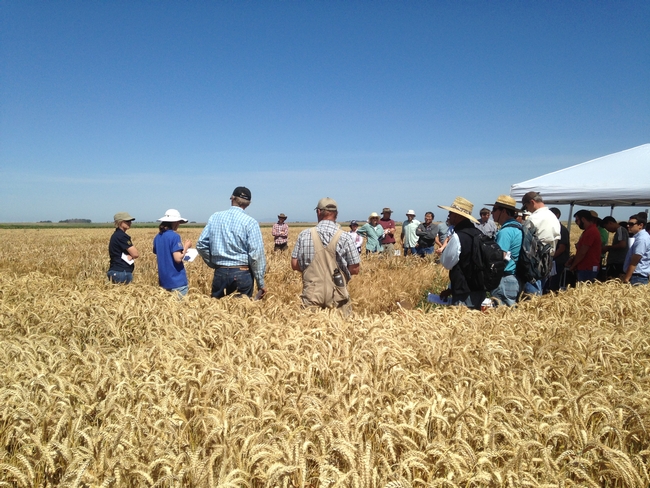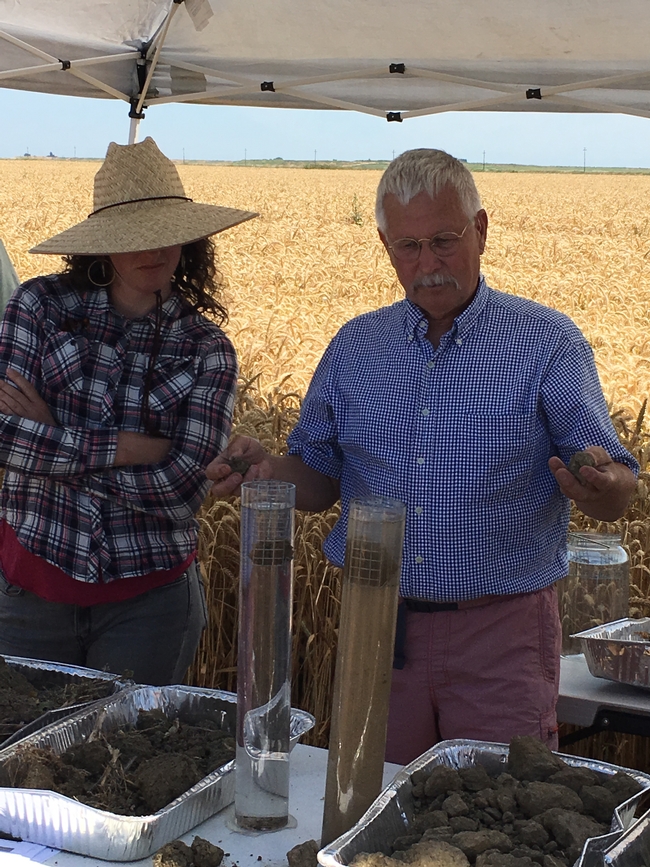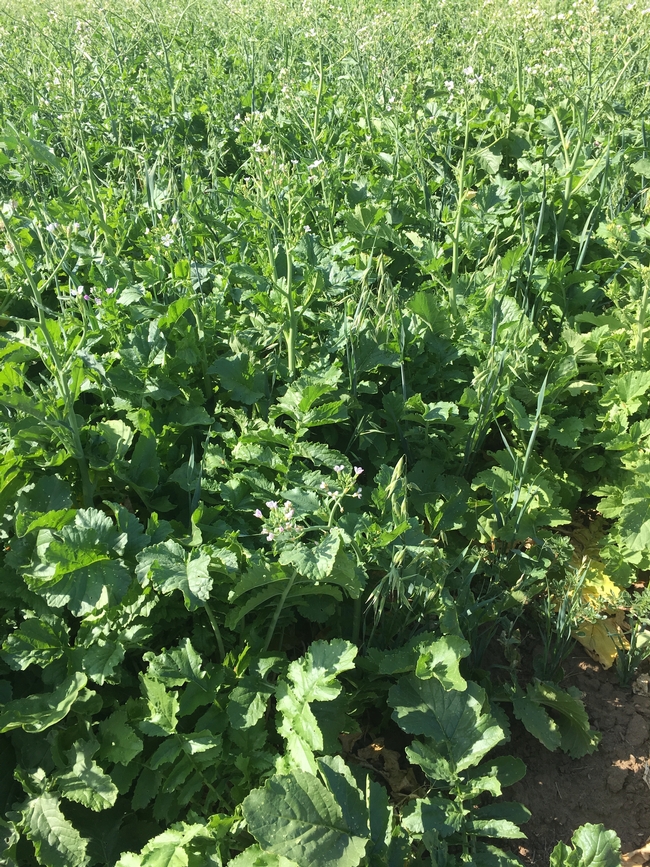
The meeting showcased the UC Davis wheat and triticale variety testing program for the Delta, and presentations were given by UC Cooperative Extension and USDA-NRCS scientists. UCCE Grains Specialist, Mark Lundy, demonstrated a soil nitrate quick test and how it can be used in small grains fertility programs. UCCE Cropping Systems Specialist, Jeff Mitchell, described tillage research taking place at the UC Westside Research and Extension Center and demonstrated how no-till plots had better soil aggregation and tilth than conventionally tilled plots. USDA-NRCS Director, Margaret Smither-Kopperl, described winter and summer cover cropping trials at the Plant Materials Center in Lockeford, CA.
Additionally, Brenna Aegerter and I described an upcoming cover cropping trial that we will conduct on Staten Island. We were awarded a CDFA Healthy Soils Program grant with our farm advisor colleagues in the Sacramento and San Joaquin Valleys – Sarah Light, Amber Vinchesi, and Scott Stoddard – along with Jeff Mitchell and Will Horwath at UC Davis. On Staten Island, we will trial legume cover cropping versus no cover cropping treatments for soil health properties, greenhouse gas emissions, and grain yield from 2018-2020.
The trial will take place in a field that is in small grains (wheat and triticale) rotations, with soil classification Valdez silt loam. Cover cropping will take place in the summer months following the small grains harvest. Initial soil sampling will take place after wheat harvest and subsequent tillage. We will take baseline soil samples, measuring bulk density, pH, salinity, total C and N, aggregate stability, infiltration, and active C (a measure of the carbon available as an energy source for soil microbial communities) in the top foot of soil. At deeper depths, we will also test bulk density and total C. We will soil sample each fall, at the end of the cover crop season, to evaluate changes in soil properties over the three years. Greenhouse gas (N2O and CH4) monitoring will allow comparative evaluations of cumulative emissions between the soil management systems. Small grains yields will also be determined.

We look forward to this trial and will share results as we have them. We want to thank Dawit Zeleke and Morgan Johnson at The Nature Conservancy's Staten Island, Margaret Smither-Kopperl and Valerie Bullard at the USDA-NRCS Plant Materials Center, and Tom Johnson at Kamprath Seed for their collaboration on this trial.
For more information on UCCE or USDA-NRCS programs, please visit the following blogs and websites:
UC Sacramento Valley Field Crops Blog